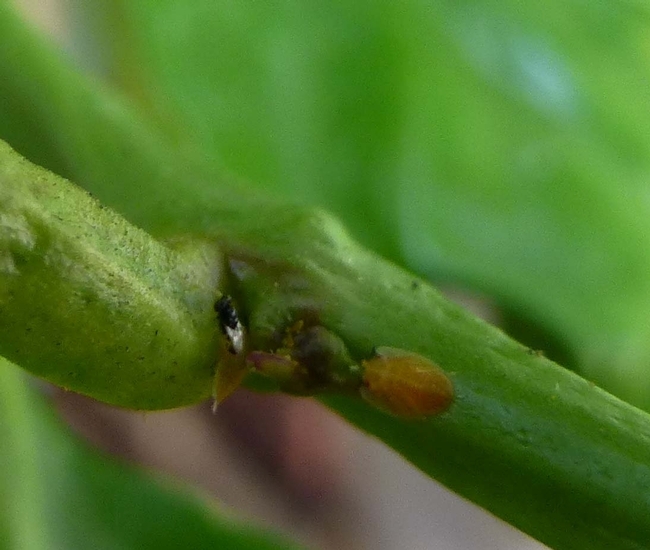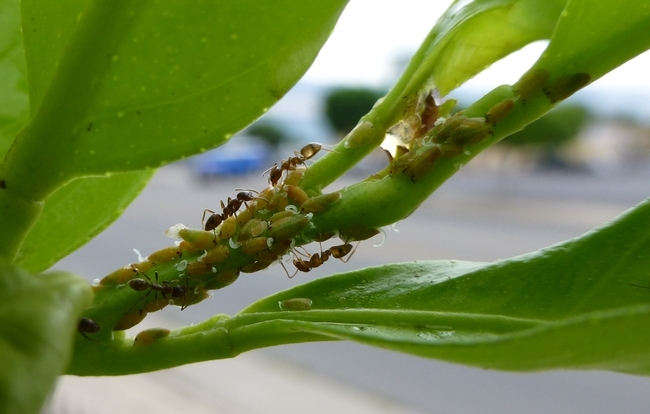Invasive meltdown
Ants can be a huge nuisance in and outside our homes, particularly if you have food lying around. But now, it turns out, they’re unwelcome, too, on citrus trees.
A year ago, UC Riverside entomologists released Tamarixia, a parasitoid wasp and natural enemy of the Asian citrus psyllid (ACP) imported from Pakistan, into a biocontrol grove in Riverside, Calif. Tamarixia can serve as an excellent biocontrol agent against ACP, a citrus pest first detected in 2008 in Southern California that is capable of spreading citrus greening disease, or Huanglongbing.
Tamarixia’s success starts with a female laying an egg on the underbelly of an ACP nymph. When the egg hatches, the parasitoid larva will scrape away the nymph’s belly, carving out a hole to push through to enter the nymph’s body. Feeding on the contents, the larva eventually excavates the entire nymph, leaving only a shell or husk of the nymph behind.
Female Tamarixia can kill psyllids also by “host-feeding.” They use their ovipositors as daggers to stab psyllid nymphs numerous times until the nymphs start to bleed. As bodily fluids ooze out of the nymph, Tamarixia sucks up this rich protein needed for developing more eggs.
An excellent way then to control ACP populations! Yes, but only until the ants come marching in. Argentine ants are threatening to disrupt the biocontrol of ACP by battling it out with Tamarixia on citrus branches. While not quite a Vader-Skywalker lightsaber duel on a precarious walkway, an “invasive meltdown” begins when the ants gang up to protect the nymphs.
“ACP nymphs produce a white, sugary waste product called honeydew, a good carbohydrate source for the ants,” explains Mark Hoddle, the director of the Center for Invasive Species Research at UC Riverside, whose research team has released Tamarixia into several Southern California citrus groves. “The ants, therefore, will protect the nymphs from Tamarixia. We have seen ants chase female Tamarixia off the psyllids, and even catch and eat them!”
“If you kill off the ants, Tamarixia can play the role of the biocontrol agent it was cast to do on citrus trees,” Hoddle says. “We’re seeing that the ants are impacting Tamarixia in two ways: they are preventing Tamarixia’s establishment in some areas; and, where Tamarixia is already established, the ants are not allowing these parasitoids to reach their full biocontrol potential.”




Posted by roy jones on January 2, 2013 at 11:32 PM